Description
Perroudite has a hardness of 2 and a calculated specific gravity of 6.75. According to Mindat, it was “named by H. Sarp, W.D. Birch, P.F. Hlava, A. Pring, D.K. Sewell, and E.H. Nickel in 1987 in honor of Pierre Perroud, a Professor at Collège Voltaire, Geneva, Switzerland, for his work on Cap Garonne minerals. Perroud also developed the first online mineral database, Athena (https://athena.unige.ch/).”
As it’s still such a new mineral, there’s not a whole lot published online yet for it, but Mindat states it’s a bright red mineral, and all photos seem to show extremely close-up shots of the red crystals, many on a green Capgaronnite or Arsentsumebite or Conichalcite, so what we’re probably looking at in this video isn’t actually Perroudite, but there is Perroudite in this video, hidden in the microscopic world. The previous vendor described it as “bright red sprays of Perroudite on green Olivenite”.
While we may not be able to fully appreciate the tiny little intricate crystals, we can still appreciate the value of these tiny green rocks, as, while they’re likely composed of some Silver, Mercury, Iodine, Sulfur, Bromine, Chlorine, and a combination of some other possible elements like Arsenic, Copper and/or Lead, it’s uncertain for sure, but the tiny, invisible crystals hidden on them somewhere definitely contain those elements, and Iodine in rock form is pretty rare! Additionally, Silver is highly prized, and yet, you’d have never known there might be as much as 23% within Perroudite!
It’s found as “an alteration of Tennantite in sandstones and conglomerates”, according to WebMineral, and the TL presents a geologic setting of an “oxidation zone of (a) copper lead mine” according to Mindat. Since its discovery nearly 40 years ago, it’s been found in 23 additional localities around the world on most Continents, but so far, only one in the US – in Nevada.
Iodine isn’t a particularly common element as found in nature. It’s the 61st most common of the 83 naturally occurring elements, found in the Earth’s crust at a concentration of only 0.46ppm. However, despite it’s relative rarity, it isn’t incredibly economically important, and Japan and Chile currently produce around 33,000 metric tons annually. So, while this rock isn’t inherently valuable, it’s still quite rare and subjectively valuable, especially to element collectors!
If you happen to find yourself out rockhounding around oxidized Copper/Arsenic/Silver deposits, be sure to keep an eye out for tiny red crystals on a green rock like this and make a new discovery, and get possibly kinda rich from the Silver, but most importantly, you’ll now be able to hopefully identify Perroudite!

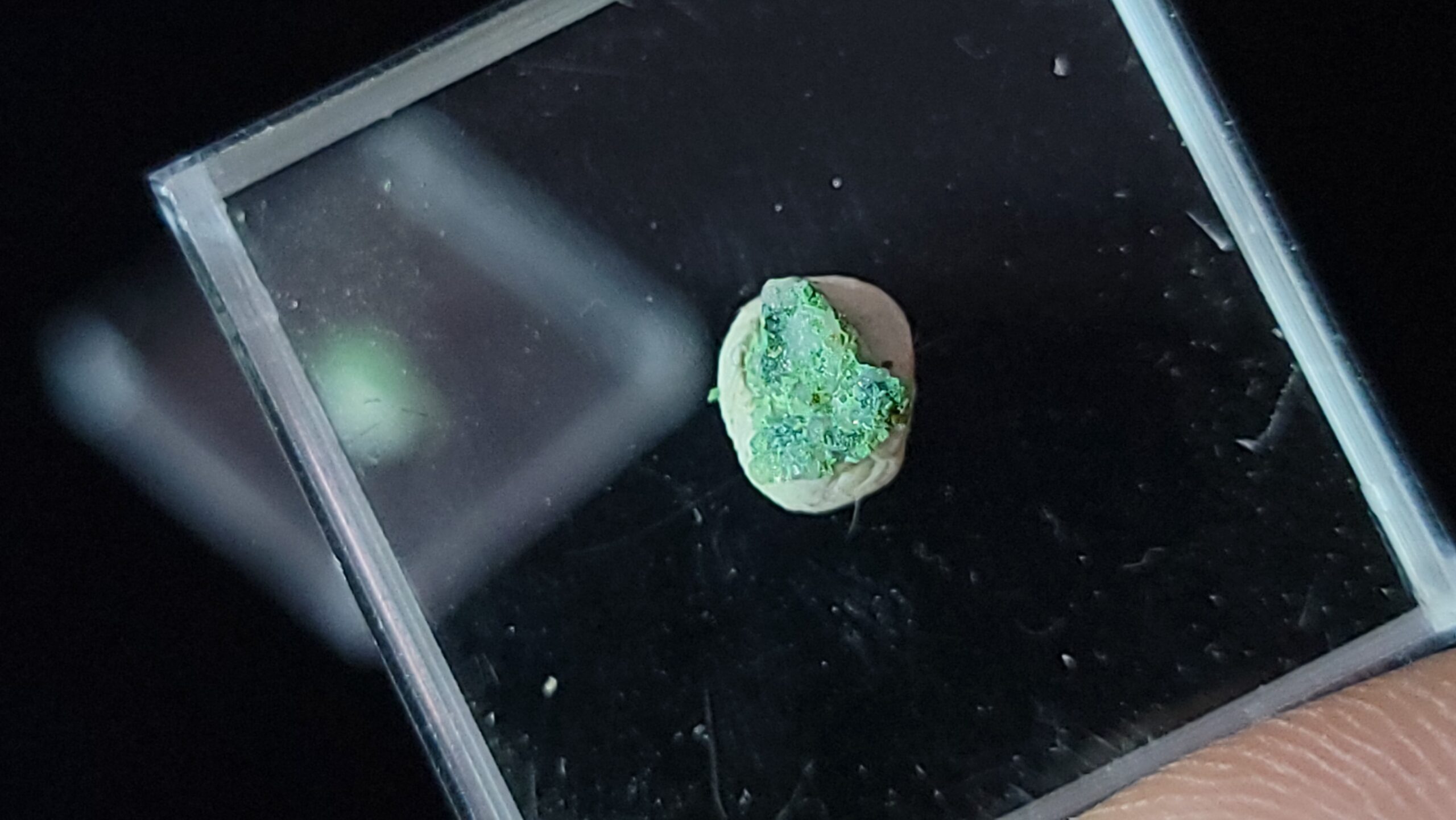
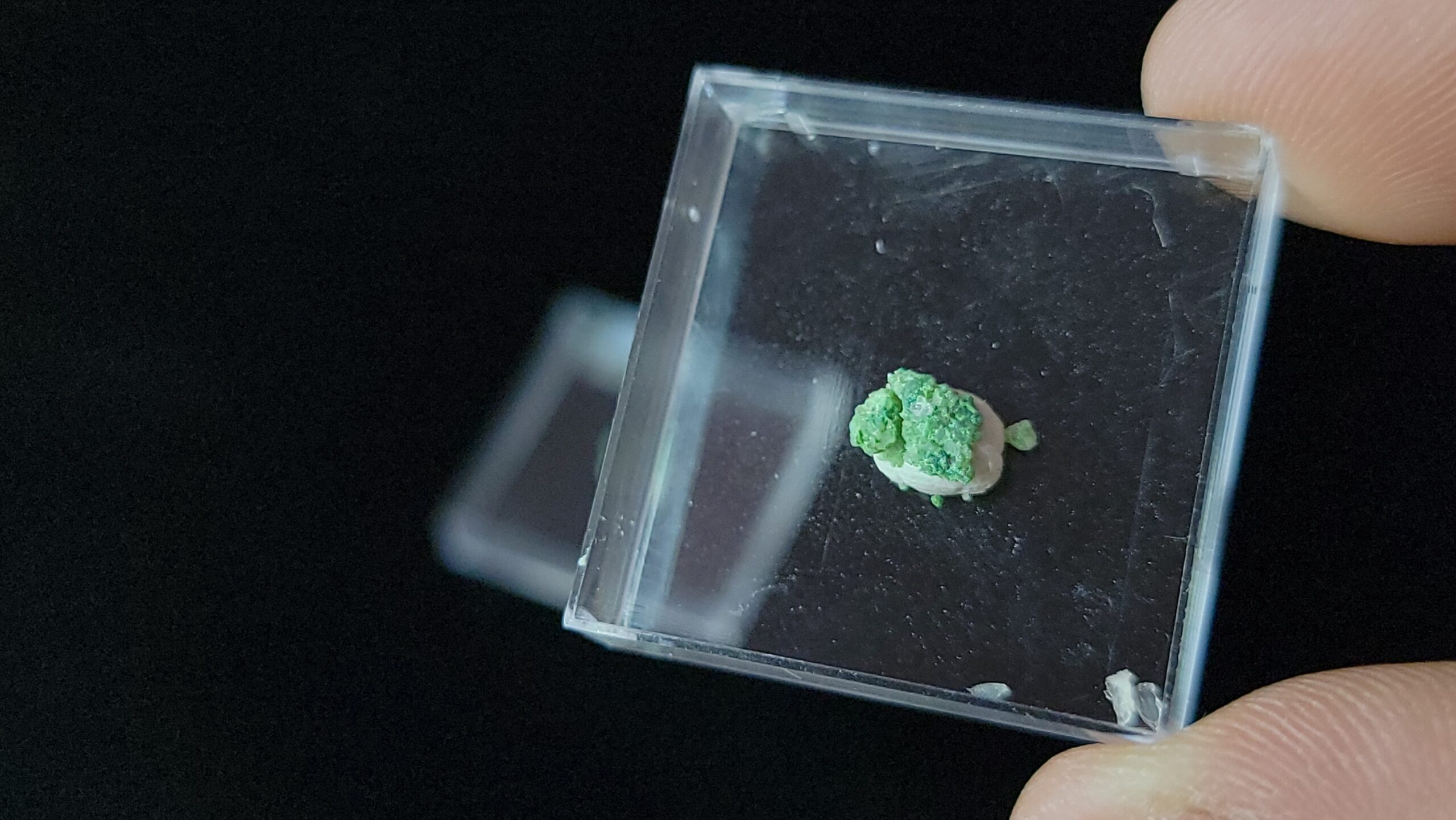

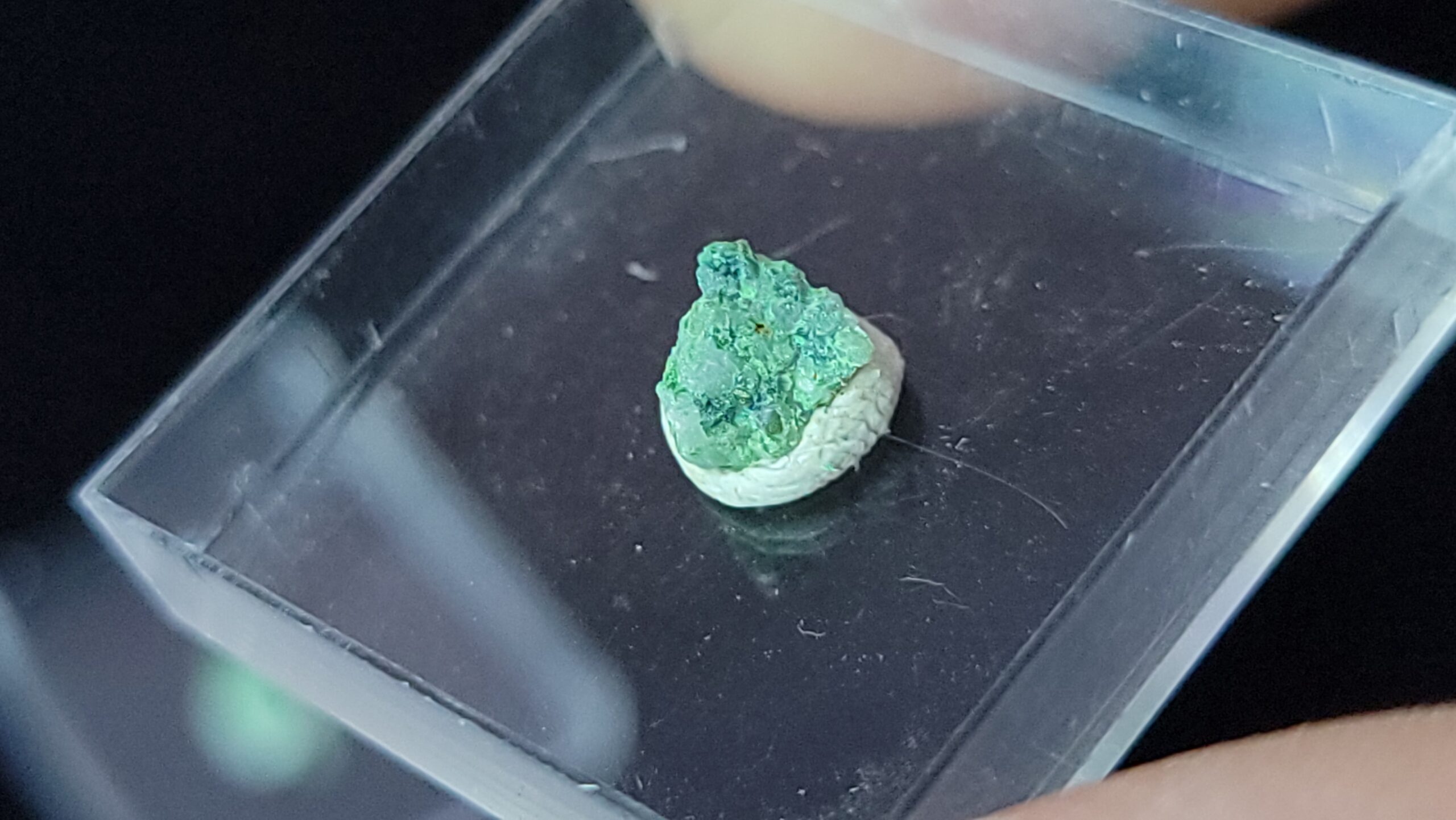

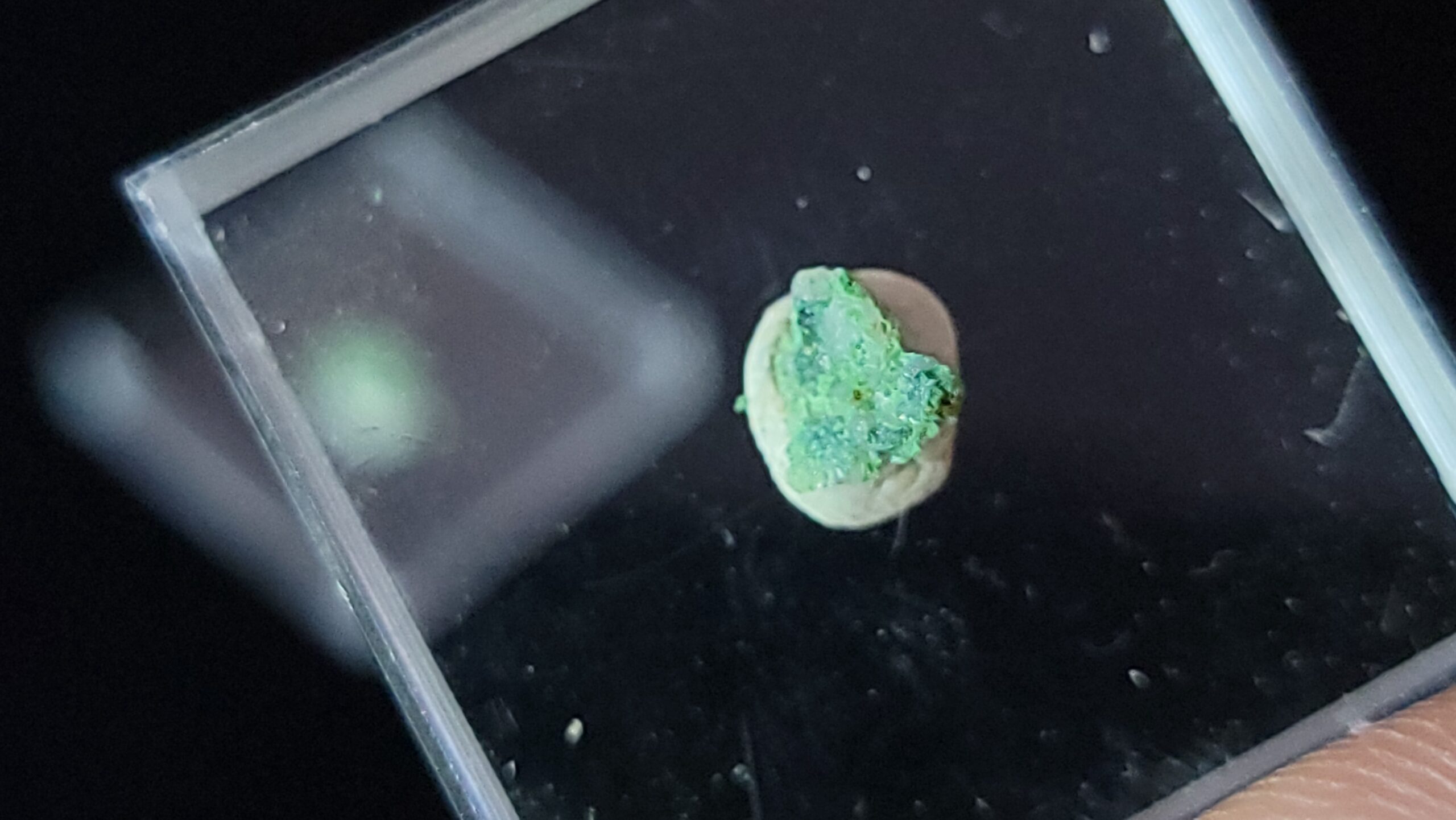
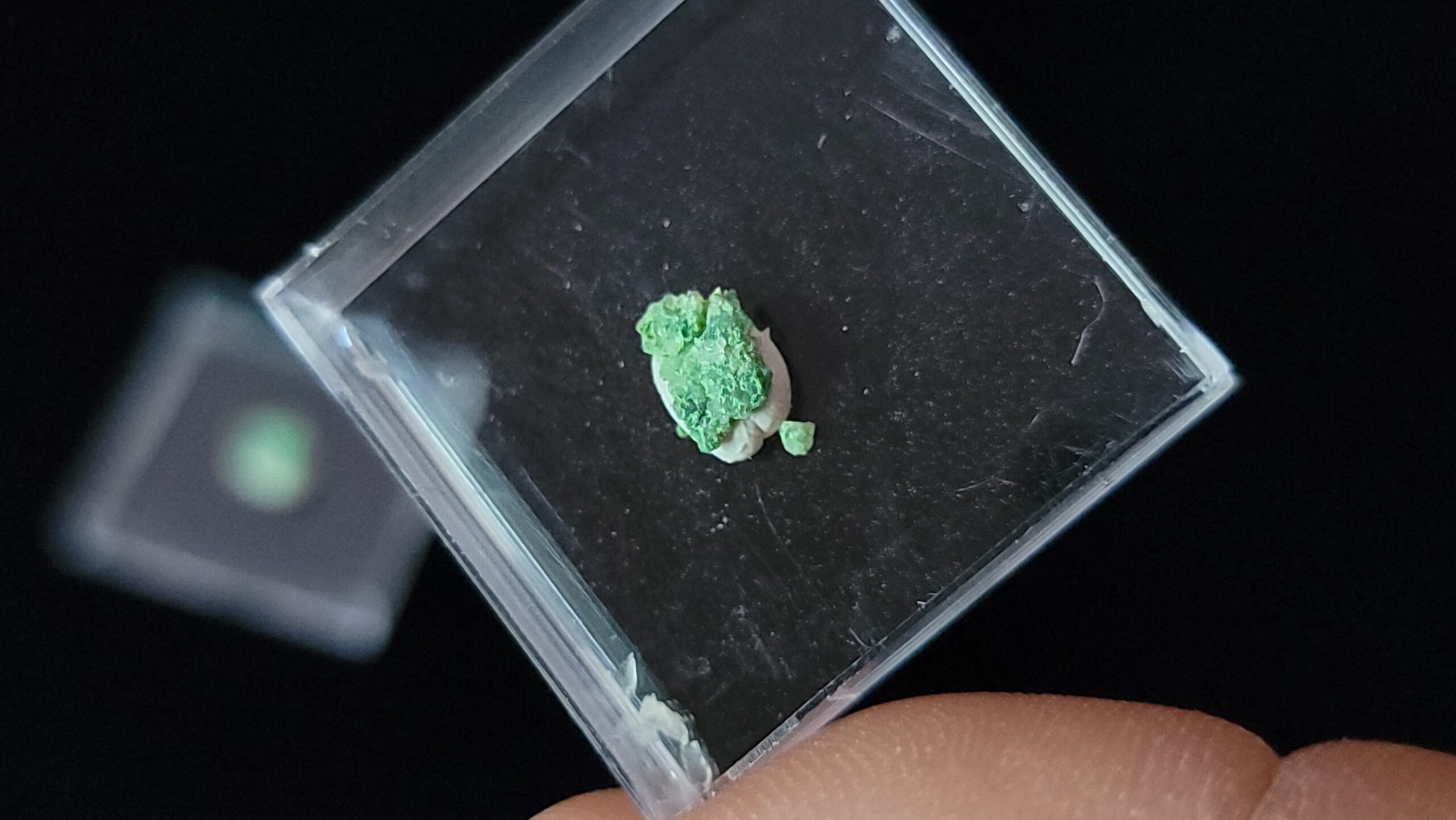
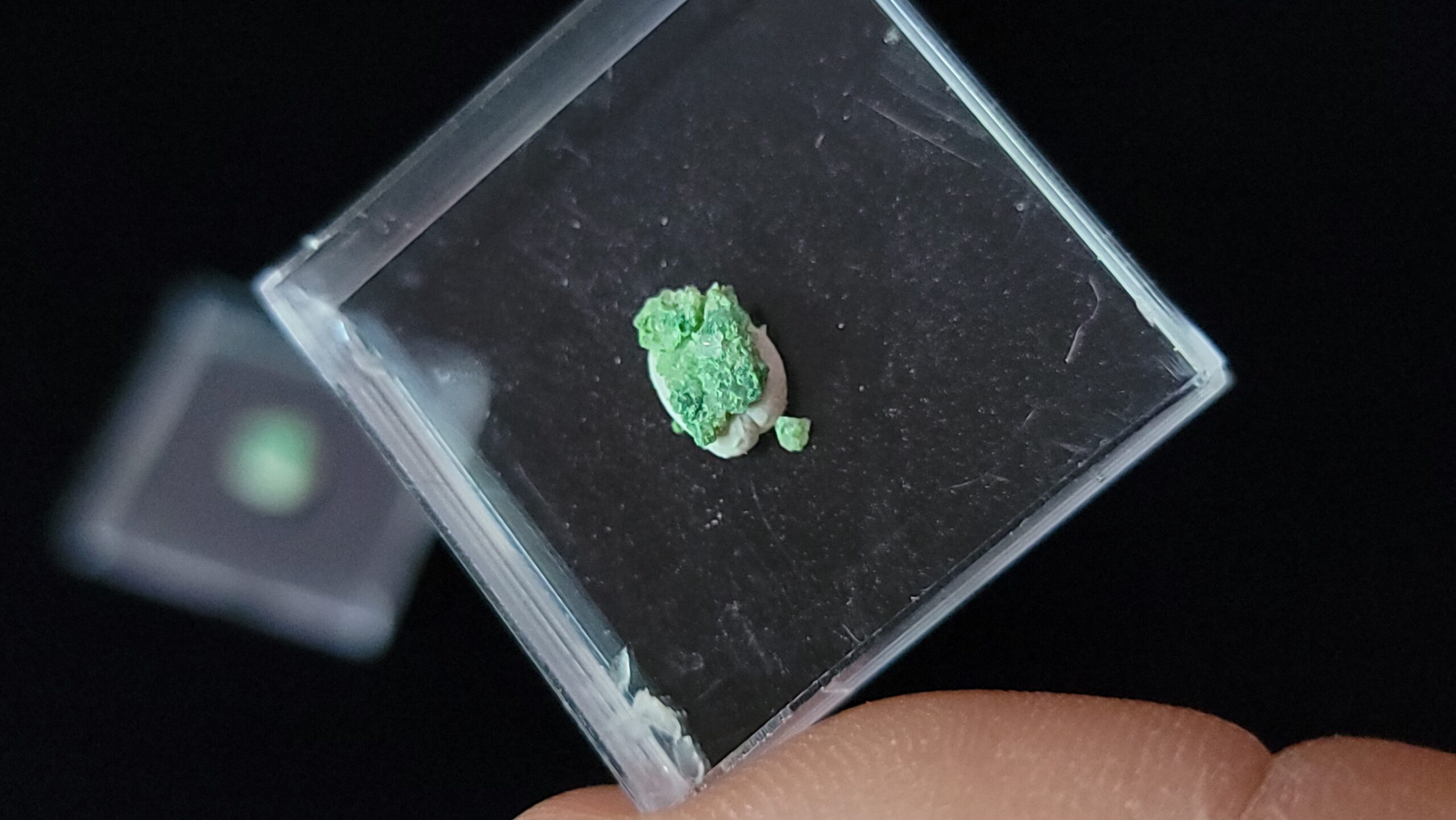
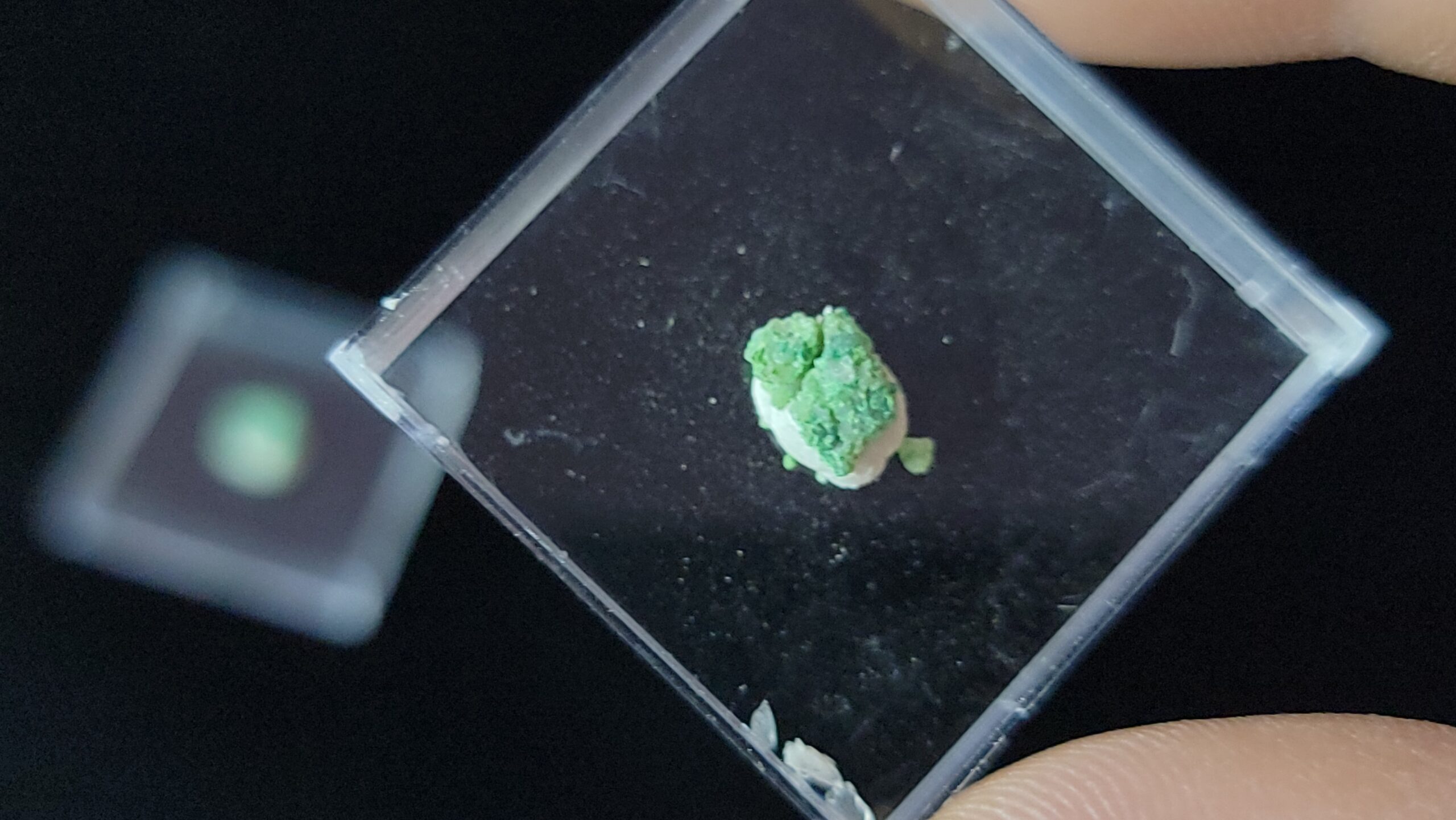
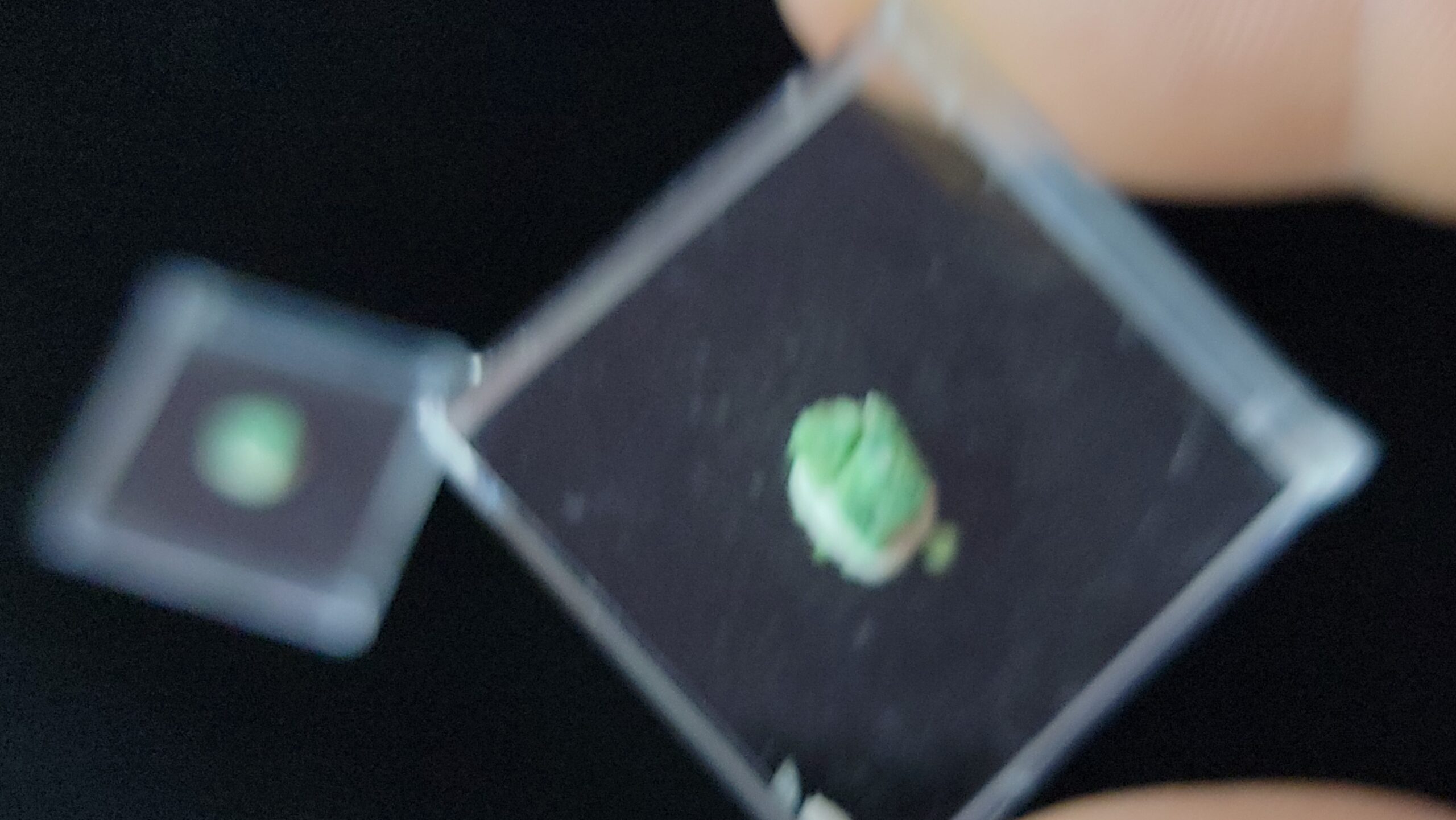
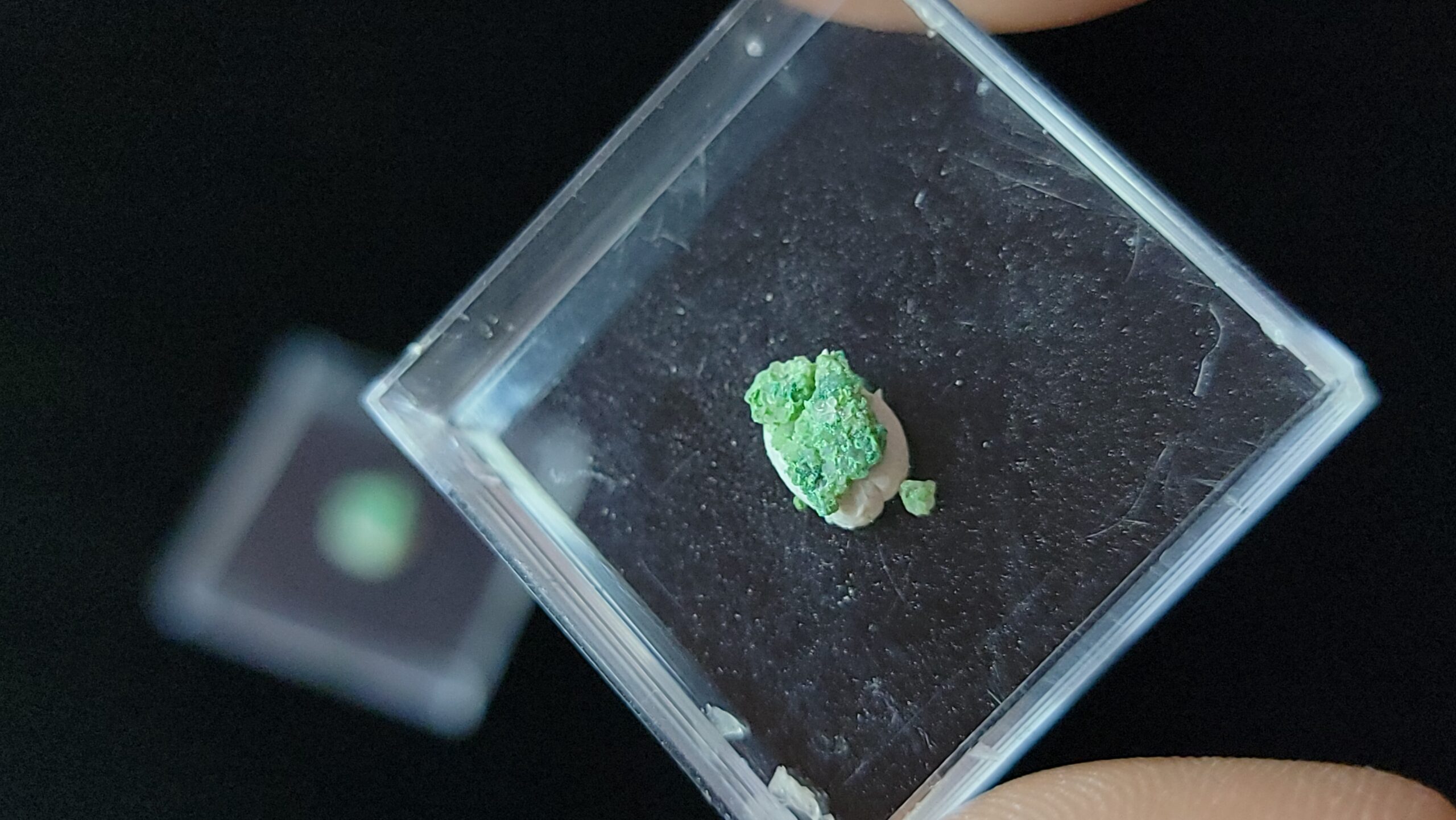
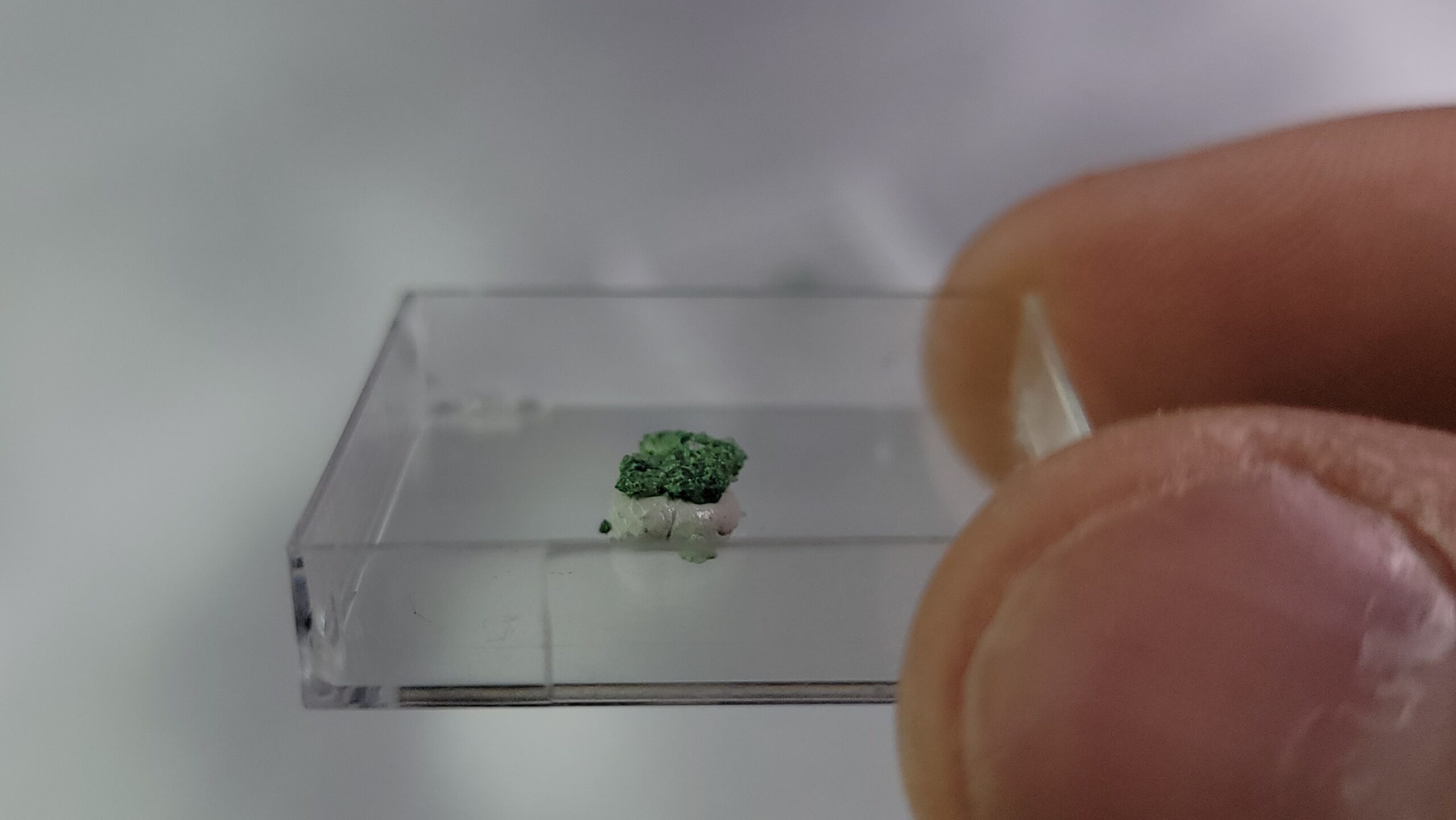
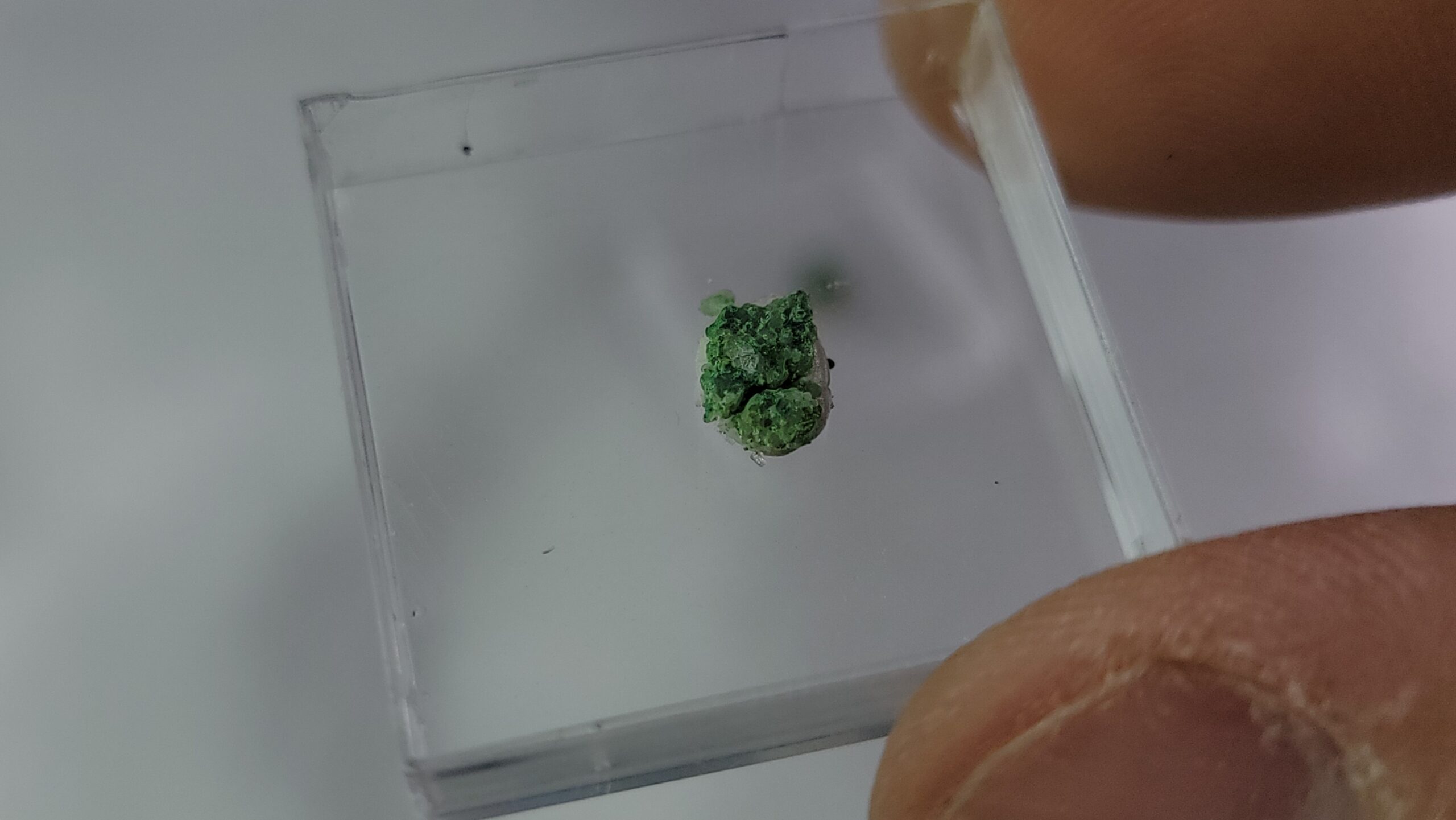
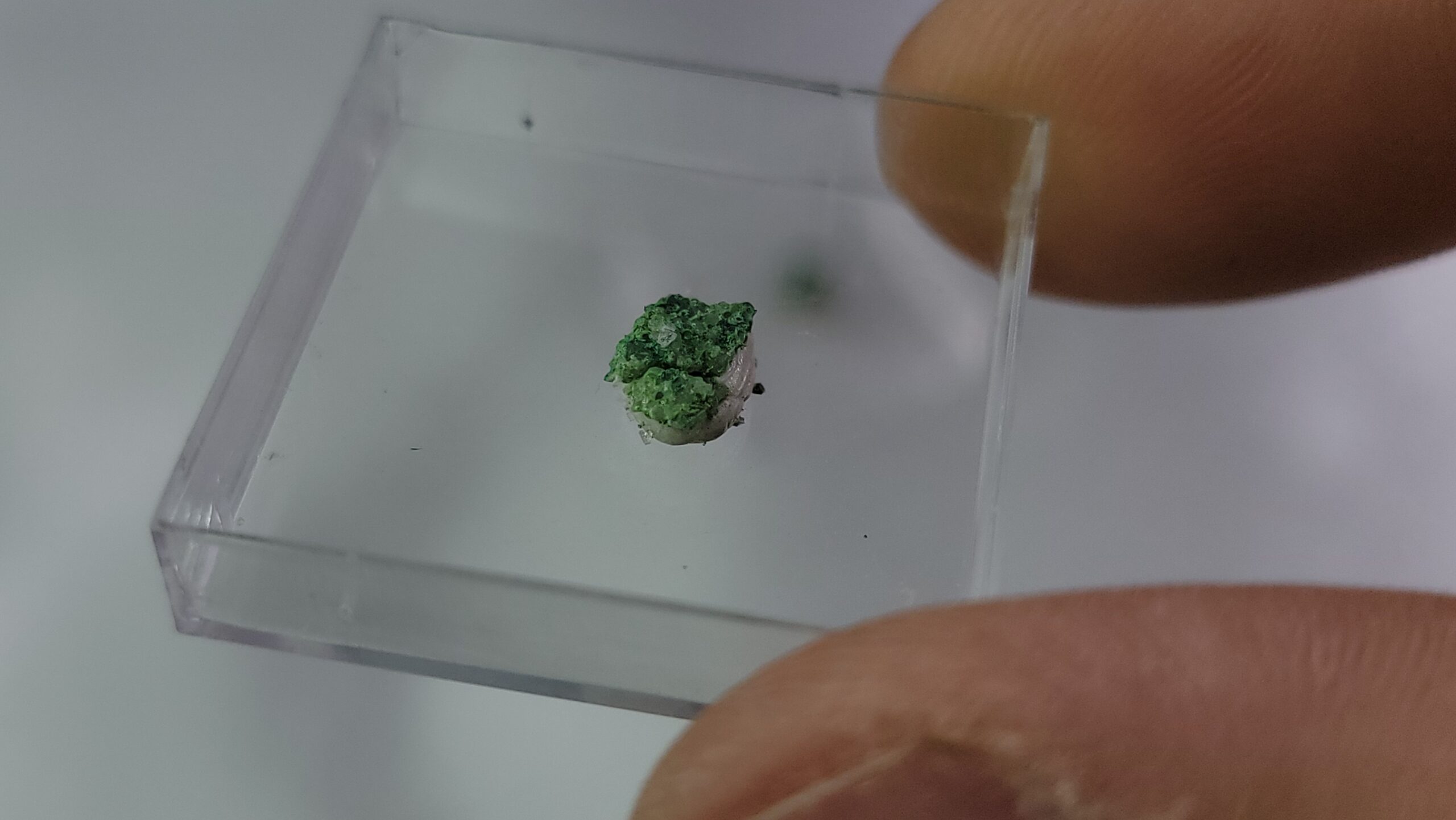




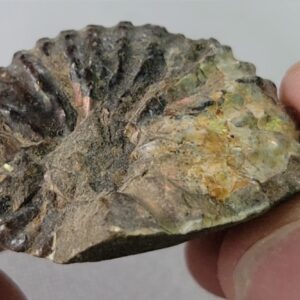
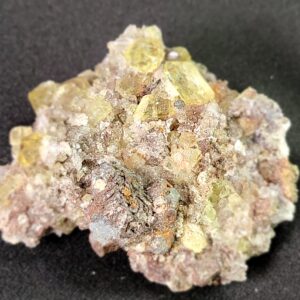
Reviews
There are no reviews yet.